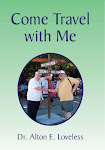
Most all of my life I wanted to visit the first settlement in America. We were staying the week in Williamsburg, we made sure that we had at least one day to see many of the places in this area that we wanted to visit.
Today, visitors to Historic Jamestowne can view the site of the original 1607 James Fort, the 17th century church tower and the site of the 17th century town, as well as tour an archaeological museum called the Archaearium and view many of the hundreds of thousands of artifacts found by Jamestown Rediscovery.
It is a long walk from the visitors center on a bridge over marsh land to reach the location. The first site you see is a very high tower as a monument to the location. Farther into the are is a large Statue of Captain John Smith and of Pocahontas. You will immediately see the ruins and the old church that the people worshipped in with a cemetery behind it.
Jamestown, located on Jamestown Island in the Virginia Colony, was founded on May 13th 1607. It is the first permanent English settlement in what is now the United States of America, following several earlier failed attempts, including the Lost Colony of Roanoke. It was founded by the London Company (later to become the Virginia Company), headquartered in London. Located in James City County when it was formed in 1634 as one of the original eight shires of Virginia, Jamestown was the capital of the Colony for 83 years, from 1616 until 1699. At that time, the capital was relocated to Middle Plantation, about 8 miles distant. (That small community, which had also become home to the new College of William and Mary in 1693, was renamed Williamsburg in 1699). The London Company's second settlement, Bermuda, claims the oldest town in the English New World, as St. George's, Bermuda was officially established (as New London) in 1612, where James Fort, in Virginia, is said not to have been converted into Jamestown until 1619. Jamestown ceased to exist as a settlement after the transfer of Virginia's capital to Williamsburg in 1699, existing, today, only as archaeological remains, whereas St. George's has continued in use throughout.
Jamestown, which was originally also called "James Towne" or "Jamestowne", is located on the James River in what is currently James City County in the Commonwealth of Virginia. The site is about 40 miles inland from the Atlantic Ocean and the entrance to the Chesapeake Bay and about 45 miles downstream and southeast of the current state capital city of Richmond. Both the river and the settlement were named after King James I of England, who was on the throne at the time, granted the private proprietorship to the Virginia Company of London's enterprise.
Despite the leadership of John Smith, Chaplain Robert Hunt and others, starvation, hostile relations with the natives, and lack of profitable exports all threatened the survival of the Colony in the early years as the settlers and the Virginia Company of London each struggled. However, colonist John Rolfe introduced a strain of tobacco which was successfully exported in 1612, and the financial outlook for the colony soon became much more favorable as colonists developed a profitable tobacco monoculture. Two years later, Rolfe married the young Indian woman Pocahontas, daughter of Wahunsenacawh, Chief of the Powhatan Confederacy, and a period of relative peace with the Natives followed. In 1616, the Rolfes made a public relations trip to England, where Pocahontas was received as visiting royalty. Changes by the Virginia Company which became effective in 1619 attracted additional investments, also sowing the first seeds of democracy in the process with a locally-elected body which became the House of Burgesses, the first such representative legislative body in the New World.
During the 16th and 17th centuries, various European countries were competing to establish colonies in the portion of the "New World" presently known as North America.
Throughout the 17th century, Jamestown was the capital of the Virginia Colony. Several times during emergencies, the seat of government for the colony was shifted temporarily to nearby Middle Plantation, a fortified location on the high ridge approximately equidistant from the James and York Rivers on the Virginia Peninsula. Shortly after the Colony was finally granted a long-desired charter and established the new College of William and Mary at Middle Plantation, the capital of the Colony was permanently relocated nearby. In 1699, the new capital town was renamed Williamsburg, in honor of the current English king, William III.
For the 350th anniversary in 1957, Jamestown itself was the site of renewed interest and a huge celebration. The National Park Service provided new access with the completion of the Colonial Parkway which led to Williamsburg, home of the restored capital of Colonial Williamsburg, and then on to Yorktown, the other two portions of Colonial Virginia's Historic Triangle. Major projects such as the Jamestown Festival Park were developed by non-profit, state and federal agencies. Queen Elizabeth II of Great Britain and Prince Philip attended. The 1957 event was a great success. Tourism became continuous with attractions regularly updated and enhanced.
During 2007, Jamestown commemorated America's 400th Anniversary, with new accommodations, transportation facilities and attractions. Queen Elizabeth II and Prince Phillip joined America's festivities on an official state visit to Jamestown in May, 2007.
I continue to be fascinated with the history of our marvelous country and found this area to add greatly to my knowledge of our early days in North America.
14 O satisfy us early with thy mercy; that we may rejoice and be glad all our days. Psalm 90:14 (KJV)





No comments:
Post a Comment